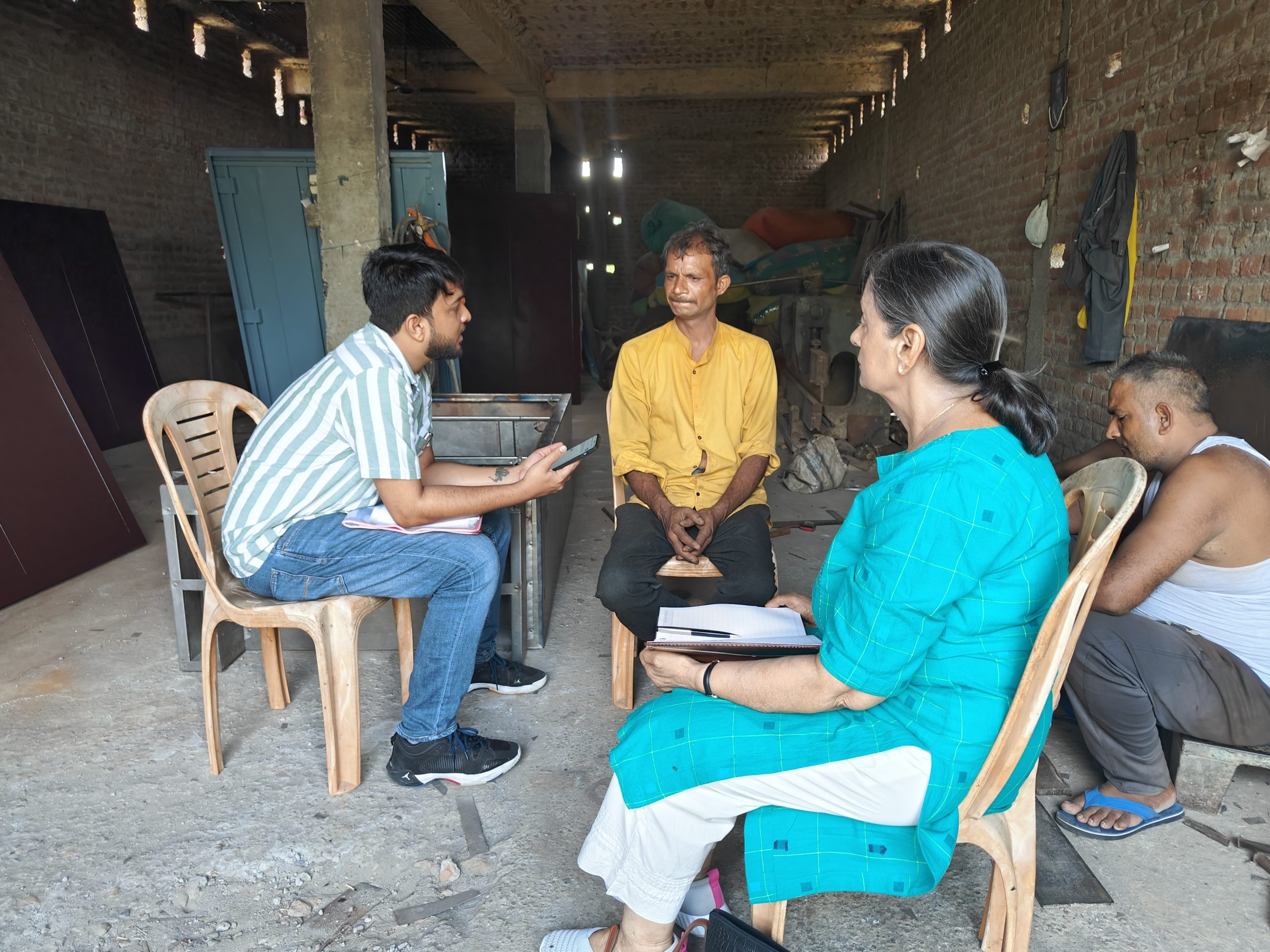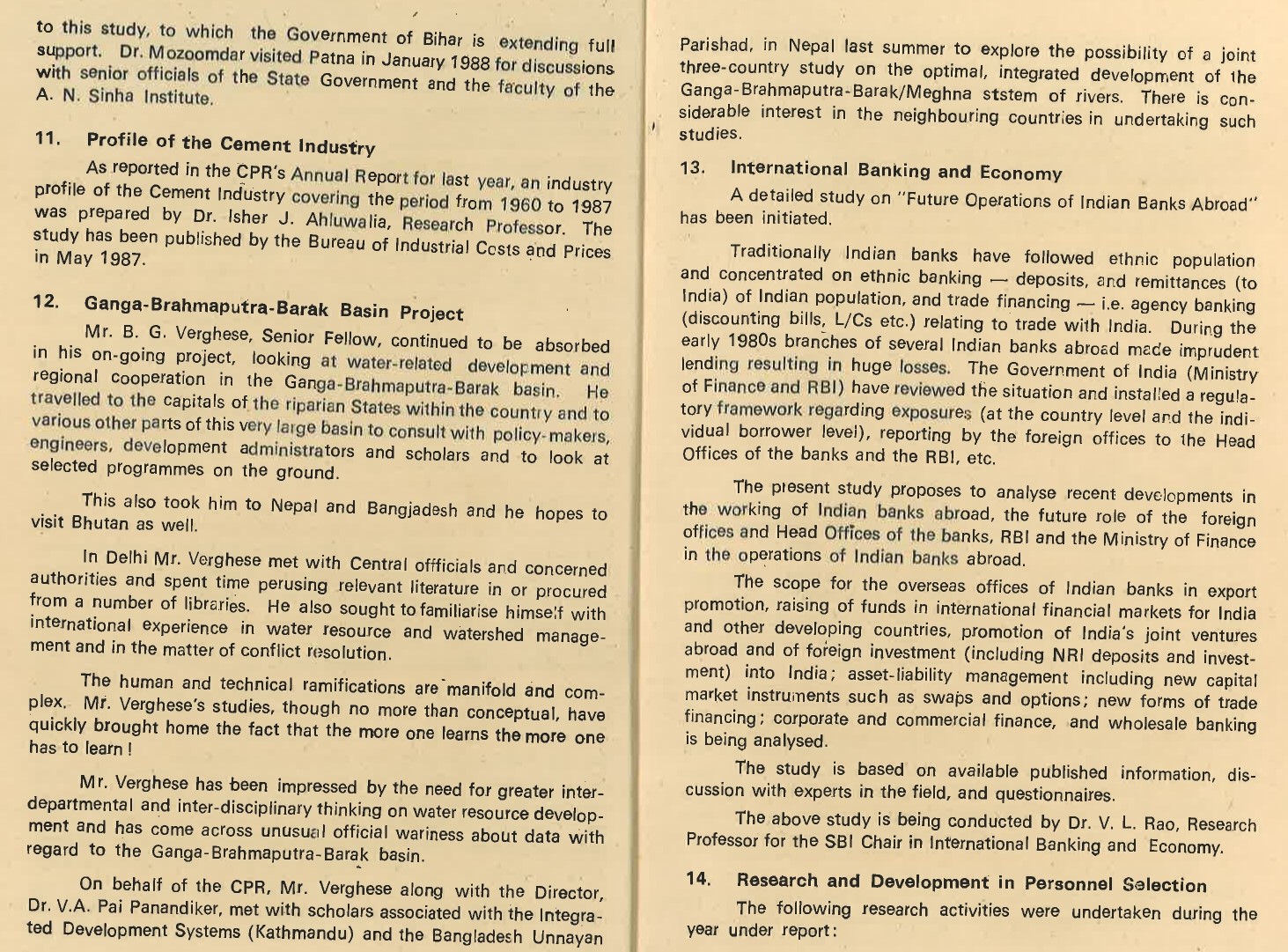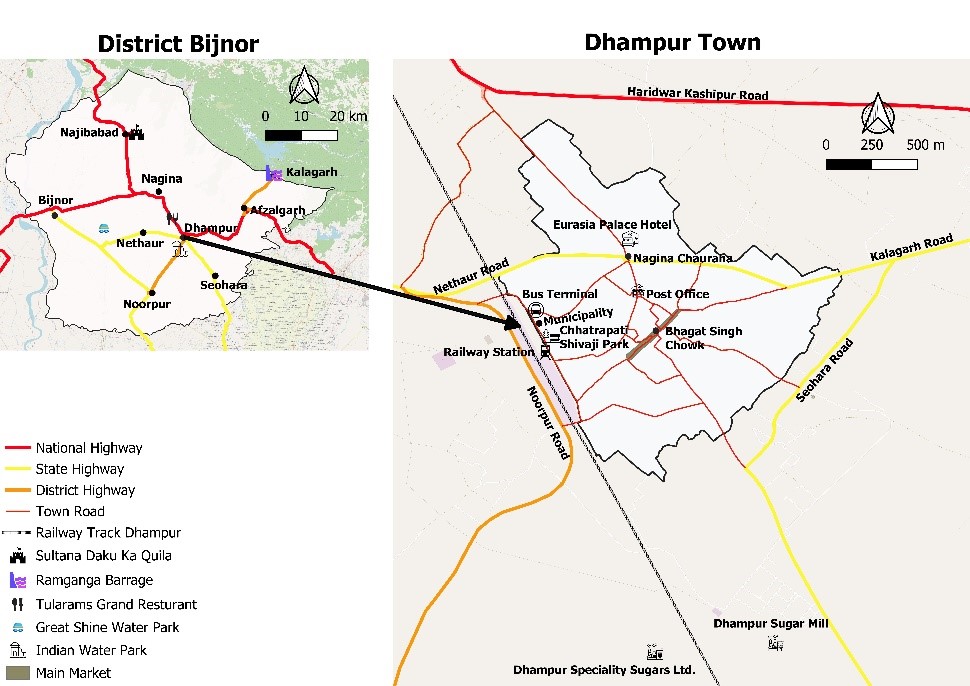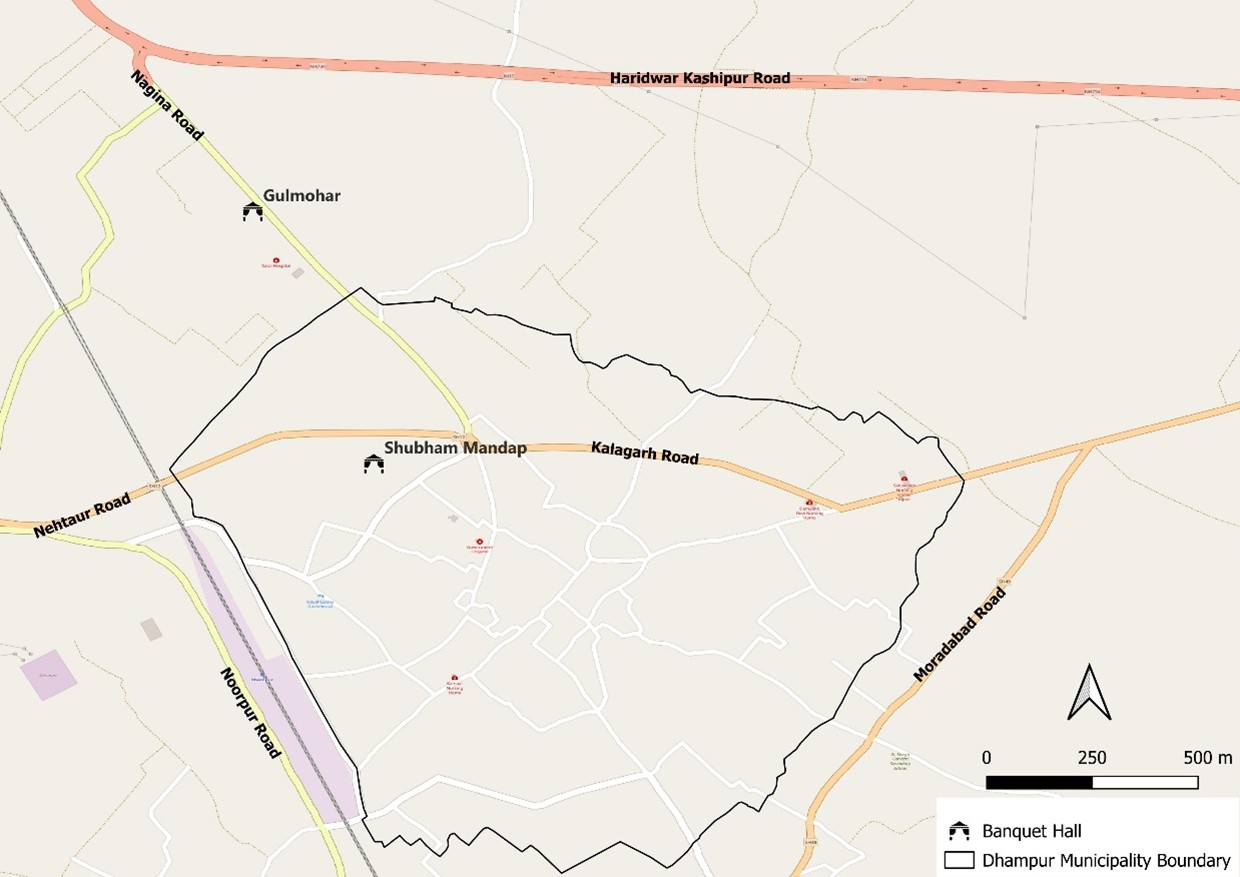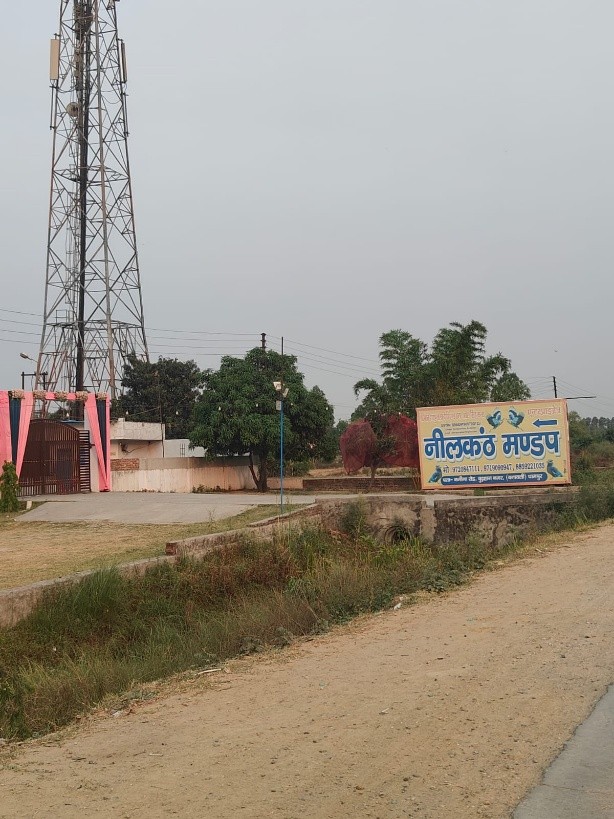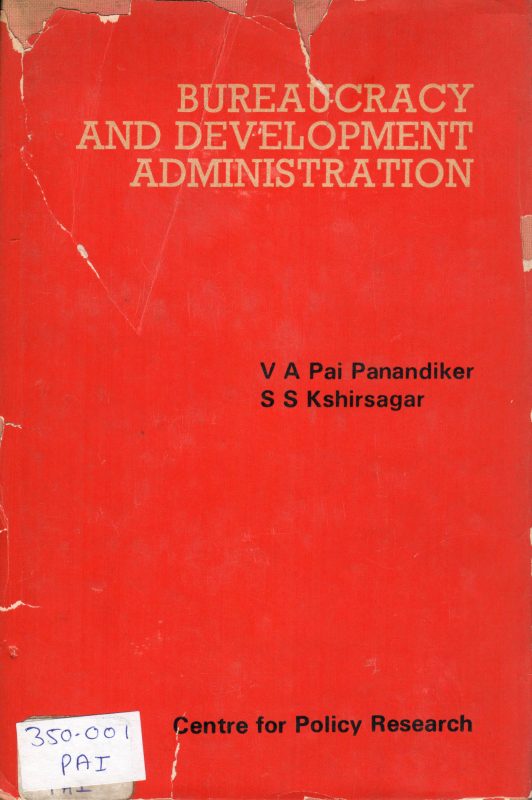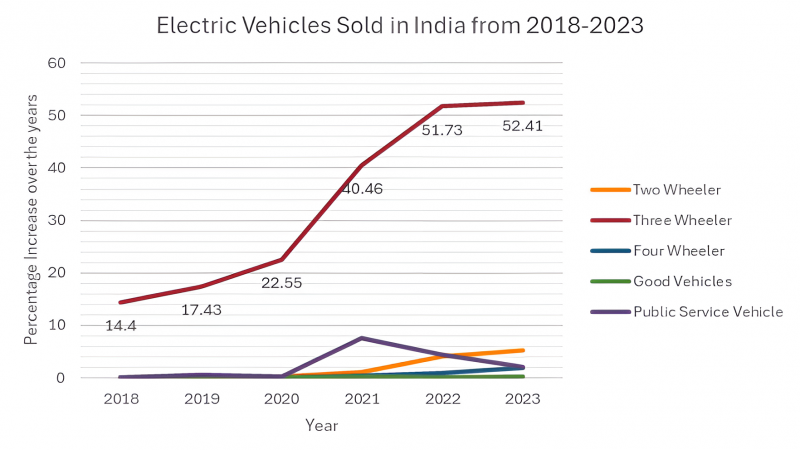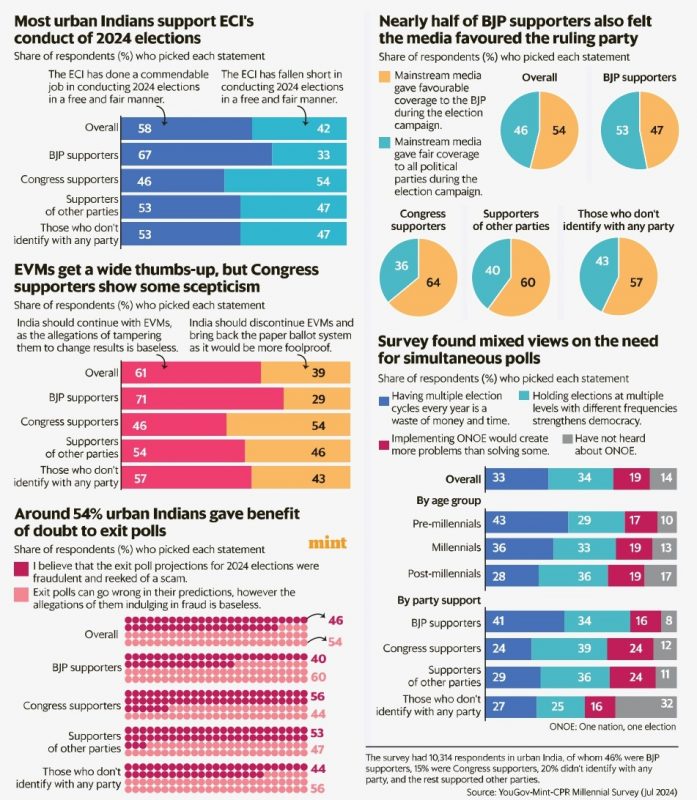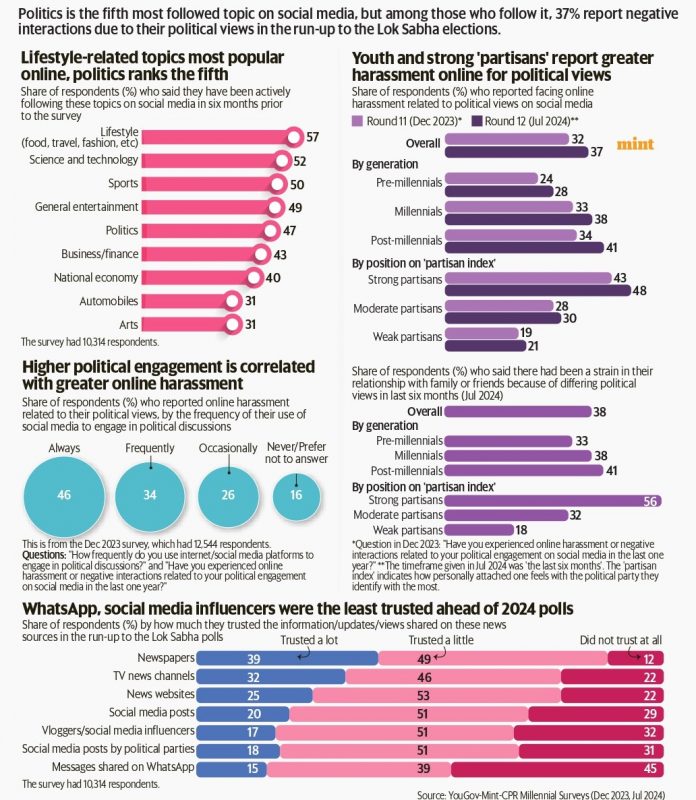The study, titled “Growth Dynamics and Regional Transformation Potential of Small Towns: 40 Years’ Development Saga of Dhampur, India,” is a repeat of Dr. Pushpa Pathak’s doctoral thesis, “Industrial Linkages and Regional Development: A Case Study of a Small Town, Dhampur,” conducted four decades ago. Dhampur, a small town located in the western Uttar Pradesh.
For the study we prepared four sets of surveys: an industrial unit survey, an entrepreneur survey, an industrial worker survey, and a rural household survey. Additionally we also had a set of interview questions for the government officials and prominent citizens of Dhampur and Bijnor. Fieldwork in Dhampur extended from February 2024 to December 2024.
The very first challenge we faced in common was skepticism as to why were we collecting such detailed information? We had to provide a full explanation, including the fact that Dr. Pushpa Pathak had done her Ph.D. thesis on Dhampur four decades earlier, why Dhampur was chosen in the first place, why a repeat survey was necessary, and how the information would be used. The idea of a book being published on Dhampur was appealing to some, but others questioned us about how the book would benefit them.
Despite the above challenges, when we met government officials, entrepreneurs and the prominent citizens they were very kind in sharing the information we needed and welcomed us warmly. Many of the entrepreneurs gave us their manufacturing products as gifts. For instance, when we visited a namkeen manufacturer, they offered us namkeen, ice cream manufacturers gave us ice cream, and iron pot manufacturers gifted kadhais. Some of them also offered us tea and snacks. They were very indeed hospitable and cooperative.
Difficulties in acquiring a current industry list and identifying the actual functioning industries
The only list of industries of Dhampur town and its surrounding 5km was dated back to 1979-80, that too was based on a primary a survey and not from any secondary source. To acquire a current list of industries in Dhampur, we first visited the District Industry Office in Bijnor. We requested for the current list of industries in Dhampur explaining the purpose of list.
- They mentioned they don’t have specific list of industries all they have the units which are registered on UDYAM and will provide that list.
- They said they would send it to us later that day, but unfortunately, they didn’t respond. We had to call them again and again, and finally, a few days later, they sent us a huge list of industries.
- We received three datasets covering the years 2020-2021, 2021-2022, and 2022-2023.
- It included 12,678 units for the district Bijnor.
- The datasheet contained extensive details of both industries as well as traders including: Reg. No, Enterprise Name, Owner Name, Incorporation Date, Commencement Date, Address, Pin code, District, State, Employment, Major Activity, Social Category, Gender, Organisation Type, Mobile No., Email Id, Investment Cost (In Rs.), Net Turnover (In Rs.), Enterprise Type, NIC 5 Digit Code, Latitude and Longitude.
- The details of latitude and longitude i.e., location of the unit were missing of each unit or else it would have been easy to identify the unit.
- We filtered the data based on their location through Pin code of Dhampur and further filtered the number of workers employed minimum 5 workers and their major activities i.e, manufacturing activities.
- This results in shorten of the data.
- Later we called each filtered unit and asked them what kind of product they manufacture and whether the unit fall in the radius of 5km from Dhampur town or not.
- During this process, we encountered several challenges, including negative responses from some contacts. For instance, one individual responded, “Hum garib hai, hume madad kijye”, while many disconnected the call, suspecting us to be representatives of the income tax department, GST department, labor department, or other government agencies.
- Additionally there were issues with multiple registrations, complicating the data further. Some units were registered under names of multiple family members and recorded as having only 4 to 5 workers. This practice is common in small-scale industries. Field verification revealed that these units were functioning as one unit and employed more workers than reported.
- Finally, we confirmed that there are 18 manufacturing units out of a long list of industries obtained from the UDYAM website.
- Out of these 18 units, many declined to be interviewed, and we were able to interview only 8 units.
We couldn’t rely on the given list. Then we visited electricity office of Dhampur, explained about the objectives of the study and we asked them for the industrial connections and, they gave us a list 6 commercial connections with minimum 20GW utilization connection and we were able to track 4 manufacturing units of the 6 commercial connections. We called each of these units to verify what they produce and their exact location.
Proceeding with multiple lists from different sources—the District Industries Office in Bijnor, the electricity office in Dhampur, and a list from a study conducted 40 years ago—we pursued two strategies.
First, we visited the known industrial locations for on-ground verification. We planned our visit accordingly & after reaching there, we got information about other industries as well. Additionally, we drove along all five highways connecting Dhampur with other cities to check if there were any industrial units located along the roads. We would stop, introduce ourselves and the study, and make a request for the meeting. We repeated this method to gain more clarity on the list of currently functioning industries. This process was also accompanied by making calls to the contacts available to us and verifying them repeatedly to determine whether these units fit into the criteria established for the study.
Second, we engaged with various stakeholders, including government officials, entrepreneurs, and residents, to gather additional information on industrial units operating in Dhampur and its 5-kilometer radius. When we discussed the industries list with prominent citizens of the town about the industries, they were surprised that we were considering the “chota mota” unit (Micro and Small Enterprises) as an industry. They considered Dhampur Sugar Mill Ltd. (DSM) the only industry in the town. However, we explained that we were looking for industries that are involved in manufacturing processes, and they also added a few units to our list. Upon explaining our criteria for the study, people informed us about the industrial units they were aware of, which had not been included in our prepared list.
Additionally one of the entrepreneur and a prominent citizen of the town suggested us to talk to the The Indian Industries Association (IIA) for the detailed list of manufacturing industries in Dhampur, we called them, but they don’t have the list of manufacturing industries. This information would have helped us identify entrepreneurs and industrialists who are members of these associations, particularly those from Dhampur in the Bijnor chapter, and who are successfully running units in the town. When we tried to search their website the details of the industries were missing.
This is how we drafted the industries list of Dhampur, the more we looked, the more we found! The process of preparing the list was one of the major challenges and was followed exclusively during the first field trip. It continued in all subsequent trips until the locations and names of the units were repeatedly the same, and we could not find any unit later.
Challenges in connecting & building trust with govt. officials, entrepreneur & workers
- Challenges in securing appointment with government officials via emails
We composed emails requesting appointments to the District Magistrate of Bijnor and the Chairperson of Dhampur Municipal Council but did not receive any response from them, so we found the contact number of District Magistrate of Bijnor on Google and called them and it was more effective when they asked us to come meet them. We went with set of questions and DM accepted it and told that we will get the response of each question in transcribed form which is very helpful for our study. Without facing any problem we also got chance to meet other government officials, we narrated our study and they praised us for doing such study on Dhampur and they supported us by providing us with the all relevant information and data for the study.
- Meeting with proxy Pradhans
We also met both of the proxy Pradhan’s from our two-village study. It was very surprising to see the women elected for the Pradhan post, but just on the paper. When we asked one of the Pradhan, he said “innhe kya pata gaon or logo ke bare me”, and when we met them they didn’t even talked to us and didn’t showed any interest.
We easily met the proxy Pradhan of Sarakhthal Madho, but when we narrated our story and told him that we will be doing survey in the village, he replied “Kahe ka hum battaye aapko, hume kya milega”. Later he said “Jo sahi lagega vo battayenge” and there was lot of discrepancy in the survey, later we had to delete his records.
Contacting the proxy Pradhan of Allahadinpur Bhogi was particularly difficult. We called him multiple times when he commited to meet us in his village, However, when we reached at the village, he was unavailable due to his personal reasons and recommended us to meet his friend instead. Accordingly, we met his friend but the information which he provided was scattered & lacked clarity. After realizing it’s necessary to meet the Pradhan in person to extract right information, we initiated multiple calls & kept on chasing him for the meeting. He committed to meet us but was not available at the agreed times. Eventually, he blocked our contact numbers. We shared these challenges with the block Pradhan, who assured us he would facilitate a meeting with the panchayat Pradhan. Despite these assurances and our follow-up attempts to contact the Pradhan were unsuccessful.
Challenges in securing appointment with entrepreneurs
- Individual units were contacted to request appointments. We faced significant skepticism; many entrepreneurs suspected us of being impostors.
- A common misconception was that we were representatives from the Income Tax Department, GST Department, Labour Department, or other government agencies.
- Multiple calls (typically two to three) were made over several days to secure appointments. Regular follow-ups were necessary to overcome initial resistance.
- Entrepreneurs frequently canceled appointments at the last minute with remarks such as “I don’t have time now and let’s meet tomorrow”. Many were not present at the agreed time, necessitating repeated visits.
- Despite having appointments, entrepreneurs often rushed conversations mentioning, “Please be quick, I don’t have much time”. This sometimes resulted in getting limited information and therefore incomplete data.
- Some of the entrepreneurs whom we approached were reluctant to meet & some of them denied any engagement with the workers.
Challenges in engaging with workers
- Engaging with workers in small units was facilitated by the cooperation of the entrepreneur, who encouraged them to participate in the survey.
- The presence of the entrepreneur during interviews made workers hesitant to respond precisely specially when in terms of income and workers welfare benefits.
- Communicating with workers at Dhampur Sugar Mill proved challenging due to their shift schedules.
- The admin officer suggested us to meet the workers outside the campus as the workers were busy.
- Outside the campus whenever we tried approaching the workers, they seemed tired from their shift & in a rush to reach home.
- Consequently, only 1 out 10 workers gave their valuable time & answered our queries. We approached a parking guard and narrated about our research, he agreed to help us by asking the workers to cooperate & supported us a lot in engaging with the workers.
- Some workers were not very comfortable in answering as they wanted to understand how it is going to benefit them.
- Multiple visit outside of Sugar mill helped in building the trust of workers as they saw us coming every day for the survey.
- Despite efforts, some workers remained reluctant to provide comprehensive information, that results in limitations in data collection.
Challenges in Data Collection and Geocoding Accuracy Using Kobo Toolbox
The questionnaire administered via Kobo Toolbox comprised a mix of quantitative and qualitative questions. Responses to quantitative inquiries were provided as numbers, while qualitative questions were answered via voice recordings for each question separately. However, in qualitative questions respondents occasionally addressed multiple questions within a single response, this made it hard to make a prorate data. To fix this, we had to listen to all the recordings later and figure out which answer went with which question. Additionally, we were finding it difficult to do geo-coding of a few of those industries that were located in the interior part of the town with dense buildings clustered together. Consequently, Kobo Toolbox showed low location accuracy, and resulted in inaccurate recording of the location of some of the industries.
Budget and Logistics Challenges during Field Visits in Bijnor and Dhampur
The budget we had for field work was ₹6,30,000. The hotels were expensive and there were not many options of hotels to choose from and get a hygienic accommodation under budget. After a tremendous search, we found a nice place, and though it was expensive, we were left with no alternate options. Additionally, we didn’t have easy access to transport for local travel which led to booking a taxi from Delhi to Dhampur and keeping it for the whole field visit, which was quite expensive. These two major expenses exhausted our budget, which led to the need to enhance our study budget.
